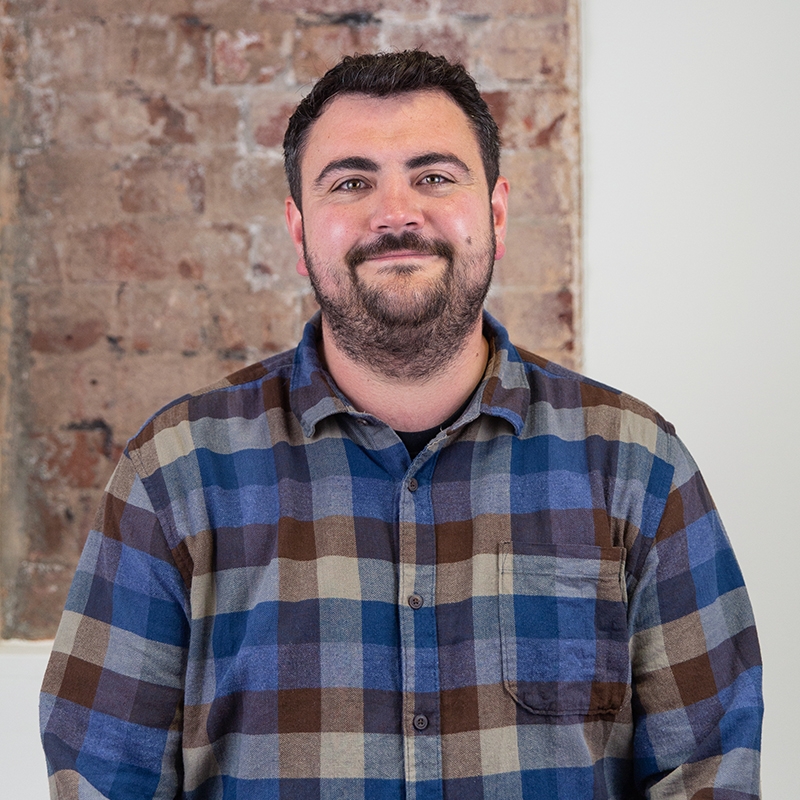When starting a digital project we often begin by running several fun collaborative workshops where we can all get involved and introduce our clients to more members of the team.
If lockdowns have taught us anything it’s that all of these workshops are possible to run remotely, using tools such as MS whiteboard, Miro & Invision Freehand. However, with the return to the office in-person workshops are now possible. In our experience, these can feel more personal and organic. The side conversations that happen whilst fresh coffee is brewing are often where the best ideas are born.
Here is a taste of some of the workshops that we do:
Book Jackets
Designing a book jacket is an alternative form of card-sorting and message prioritisation. You avoid any design considerations that happen when wireframing and instead solely focus on the messaging. The most pertinent information will go on the front cover, followed by the back cover and then the inside flaps. The spine can be used for a mission statement or a one-line summary. You can do this exercise collectively as a group, or instead, you can ask each member of the workshop to complete these individually and then review them together.
The book jackets can then be used to create website wireframes or form the basis of a campaign strategy.
User personas in collaborative workshops
An understanding of the target audience is key to producing exceptional experiences. One of the most important questions to ask is “Who are we designing this for?” By recognising the goals, frustrations and motivations of the user it is possible to create successful and satisfying experiences.
Building realistic personas will help you to empathise with your audience and avoid self-referential design, creating for yourself and your organisation rather than the end-user.
A good persona will include:
- A name
- Demographics
- Income
- Goals
- Frustrations
- Behaviour
- Opportunities
- Current knowledge
Working on personas in a collaborative workshop helps to ensure that all key stakeholders are agreed on these audiences and ensures that there is a common and clear understanding of them.
IdeaStorm
Challenge your goals/problems by coming up with as many ideas in a set amount of time as possible. There are no wrong ideas! Some will be weird, and some will be basic, but getting everything out there will help you develop your thoughts and may inspire others in the group.
This task works best when there are as many people as possible involved in working collaboratively. The aim is to get ideas floating and creativity flowing. Ideally, you should break out the post-its and collate them all on a spare wall or two.
Once the time is up take a step back and look to see which ideas are worth pursuing, what thoughts can be combined into a solid idea, and what can be discarded.
Competitor analysis and gap-finding workshops
We work with clients to investigate and interrogate their websites in comparison with identified competitors. We look at everything from the tone of voice to the hierarchy of information in a number of collaborative workshops. Evaluating the design style of your competitors can allow you to find inspiration and identify dislikes. It can also help you understand any design language particular to a specific market or industry that you need to be mindful of.
How do we do this? I find digital boards like Invision excellent for this. It allows you to take screenshots of web pages, using the excellent gofullpage chrome plugin, and then the Spicerack team and client team can add notes and thoughts all around them. The benefit of using a digital whiteboard is that you can zoom in and out easily and the content is readable. Gone are the days of printing a webpage onto multiple A4 pages and breaking out the masking tape!
Ultimately, understanding what your competitors are doing will help you to spot any gaps in the market, and therefore tailor your messaging and design to capitalise on this.
If you incorporate these steps you will not only have a clear process by which you can get your project underway but also you put your users at the centre of your work leading to a more successful result.















